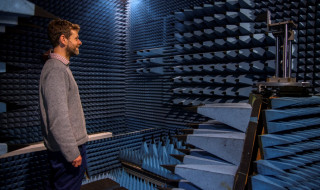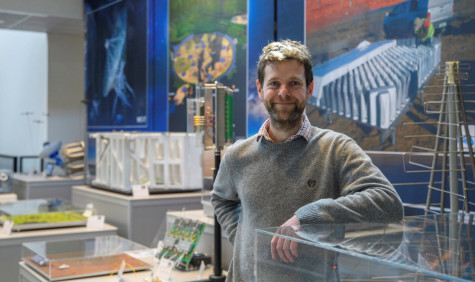"We have literally opened up a new window to the universe"
The Final Frontier
Not counting the oceans, about 80% of Earth is explored, leaving space as the final frontier. Modern-day Magelhaens are using their (radio) telescopes like their olden-day counterparts used their binoculars, and are looking for new galaxies, planets and stars in the big blue beyond.
One of these “space cowboys” is Dr. Timothy Shimwell, from the Netherlands Institute for Radio Astronomy (ASTRON) and the University of Leiden. He and his collaborators recently discovered hundreds of thousands of new galaxies, using the Low Frequency Array (LOFAR) radio telescope.

Radio telescope LOFAR
No amateur
Considering his position within a groundbreaking area of astronomy, it could be considered surprising that this wasn’t a lifelong dream. “I think a lot of my colleagues grew up loving astronomy, but it was never a passion for me as a child. I’m lucky, though, to have found a subject that I not only find to be vitally important to science, but also one that I genuinely like. I really do get up every morning excited about my work,” Shimwell says.
LOFAR
Shimwell might not have been an avid amateur, but he certainly is an avid professional. He passionately discusses the LOFAR and all that it can do, and how it helped with the discovery of these new galaxies. When asked what it feels like to make such a discovery, Shimwell modestly answers: “It’s tricky actually. It’s very exciting to see all the new objects you discovered, but when you have 300,000 of them that are new, it’s quite overwhelming.”

Black hole
You can’t discuss space exploration with an actual space explorer without talking about the first ever picture of a black hole, which was presented to the world recently. Shimwell discloses, “Unfortunately, LOFAR didn’t play a role in [taking that picture], because it is exploring a different scientific area.” He admitted to feeling admiration for the other team: “It is always exciting to make that sort of observation and to produce something so unique is really impressive.”

Extraterrestrials
From black holes, the leap to alien life is easily made. You would think that an astronomer that stares into space for 8 hours a day would have seen or noticed something alien by now, like a UFO or something like the Wow! signal. “It is something that every astronomer thinks about, of course,” Shimwell says. As for future discoveries of alien life, he notes that “Alien life is very interesting. I don’t really know how we can detect it, but I do think that the exploration of nearby stars and planets is a move in the right direction to finding extraterrestrial intelligence. I absolutely believe that there is alien life out there. It’s highly likely, statistically speaking.”
New galaxies
So, what does Shimwell’s discovery of all these new galaxies mean for his field? “It means that we can open up a new window to the Universe. This very rich dataset is now publically available and we hope that it inspires users to conduct their own experiments and research,” concludes Shimwell.

Timothy Shimwell's lab
